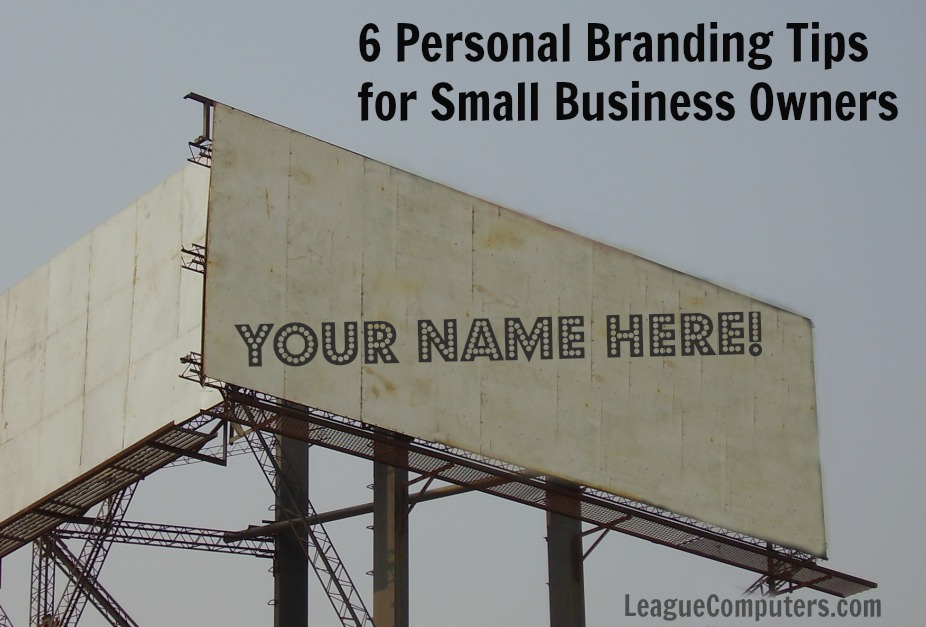For a small business owner or solo-preneur, your personal brand and business brand can overlap on social media, whether you want them to or not. People may do a search on your name before doing business with your company, or check out both your personal and business Facebook/Twitter/Google+ accounts.
While you may spend a lot of time planning a strategy for your business accounts: uploading the perfect posts and images to reflect your brand; it’s also necessary to consider the impression your personal accounts present to others online.
Since social media amplifies everything – both good and bad – it’s important to maintain control of your personal brand, and ensure that it’s one that potential customers will view in a positive light.
As Erin Bury recommends in one of my favorite quotes on social media:
“Don’t say anything online that you wouldn’t want plastered on a billboard with your face on it.” -Erin Bury
So here are a few tips to help you maintain a positive personal brand on social media:
1. Use Professional Images on Your Social Media Accounts
If it’s in your budget, invest in a professional photographer. If you aren’t able to do that right now, then make sure your photos portray you in a professional, business-like way. (Or relate directly to your brand – obviously, if you sell more whimsical products, then your profile image may be more creative.)
2. Optimize Photos of Yourself for Google Search
I read a great post recently about making sure that photos which appear in a Google search are the ones you’d want the public to see – you can click here to read it.
Use Google+ to upload photos into albums that document your business history or important milestones to get the photos you want to show up in Google Search out there.
Creating a page on your website with images that document your history, client testimonials, milestones, etc. is another way to have an impact on the photos found online.
3. Update Your LinkedIn Profile
If you are running a business, you really should have a LinkedIn profile, as it is the number one site for business/professional connections.
LinkedIn is much more than a platform to publish an online resume; so take some time to optimize your title, and summary sections; and take advantage of the features that allow you to upload and/or link to your publications, projects and awards.
Click here to see a great Infographic for optimizing your LinkedIn account.
4. Create a Portfolio of Your Work
As I was reading more about LinkedIn’s new publishing platform (that will eventually be available for all members), one point stood out: that what you publish on LinkedIn should be able to follow your resume around or represent an area that you are an expert in.
So I recommend that you put together a collection of your best work – whether that’s blog posts, SlideShare presentations, videos, photos of your products – so you can share these items on social media sites and more importantly, your website.
Don’t have any portfolio-ready items right now? Then this is a good time to make that a goal during 2014. And this isn’t an excuse to broadcast “Look at me: see what an expert I am!”, but it should be more of a collection of great resources that really help your target audience or speak to their desires.
5. Work on Your Klout Score (or sign up if you haven’t yet)
There are differing opinions on how important Klout scores are in the online world, but like it or not, a lot of other people look at your Klout score as a sign of your expertise and/or influence.
And whether or not you agree with the whole idea of Klout, some of your potential clients may be looking at your score and making a decision on whether or not to follow you on social media.
With the recent changes to Klout in the areas of content distribution, I recommend you spend a little time either setting up an account or checking out the site.
6. A Few Other Miscellaneous Ideas
Here are 3 additional tips for managing your personal brand:
Create a board on Pinterest for your portfolio – this makes a nice visual display of your best work/products.
Use a platform like About.Me to give people a quick “snapshot” of you/your personal brand – you can place links to all of your social media sites in one place, along with a brief bio.
Enhance your About page on your website – add links to items in your portfolio or embed videos, photos, etc. in a creative way to share some of your most helpful resources. If people click on your About page, then they obviously want to learn more about you.
Your business brand and your personal brand can become one and the same when you are a small business owner on social media. So you need to have a strategy for putting the best image out there on both fronts.
With a little time and planning, you can implement one or more of the tips above, and ensure that you are giving potential clients the best image of your business and your personal brand.

